7 notable changes in File Explorer Windows 11
Microsoft revolutionized the design of its flagship operating system in Windows 11 and brought many profound changes. But the improvements don't stop there. Microsoft made many small but useful feature additions with the 21H2 and 22H2 updates.
Windows File Explorer is one of those areas where Microsoft has made some interesting additions that older versions didn't have. Today's post will discuss all the notable changes made to File Explorer, some of which are not yet available in the stable builds at the time of writing.
1. Section Home
The File Explorer app has a new Home section that replaces the Quick Access option in the navigation pane. When you click on it, you will see 3 areas.
The first one is "Quick Access" , which allows you to open all Library folders with just a few clicks. Below the Quick Access section is the "Favorite" section , which displays all the files you've marked as favorites using a right-click context menu.
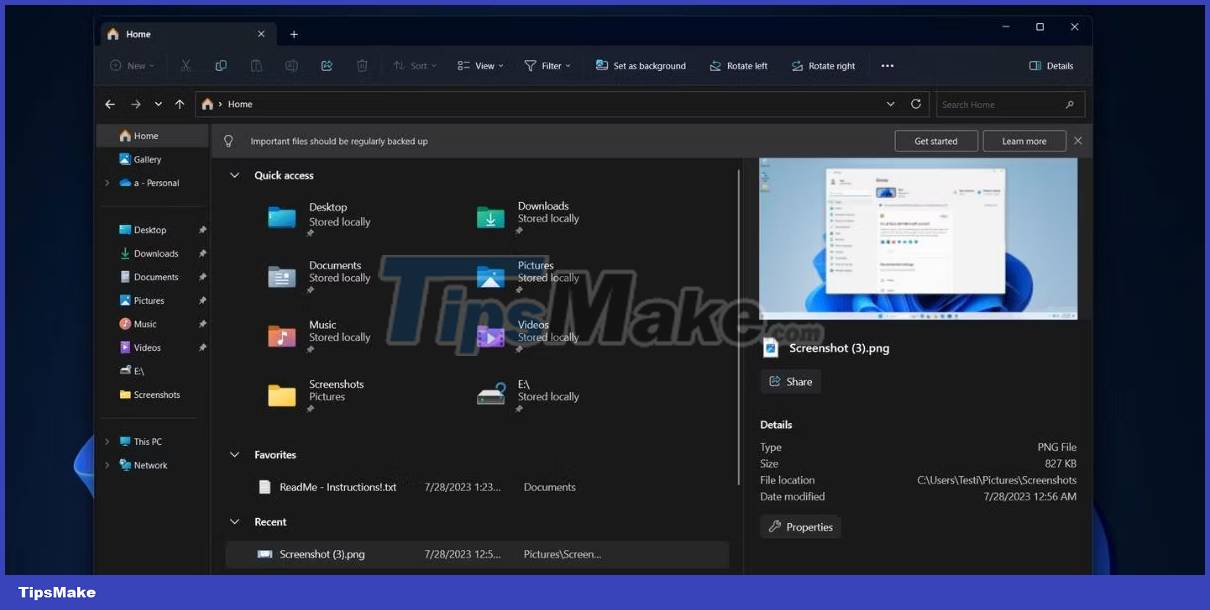
The last section on Home in File Explorer is the Recents section that shows all recently opened files. All of these sections appear neatly on Home, effectively reducing clutter in the navigation drawer.
2. A new side panel
File Explorer's side panel gets a refresh in design with a new details panel and some settings to neatly organize all the options in the navigation pane. You can switch to collapsed view to accommodate more items in the navigation pane.
The old details panel doesn't blend in with the rest of File Explorer, while the new option presents all the information about a file in a much more pleasing way.
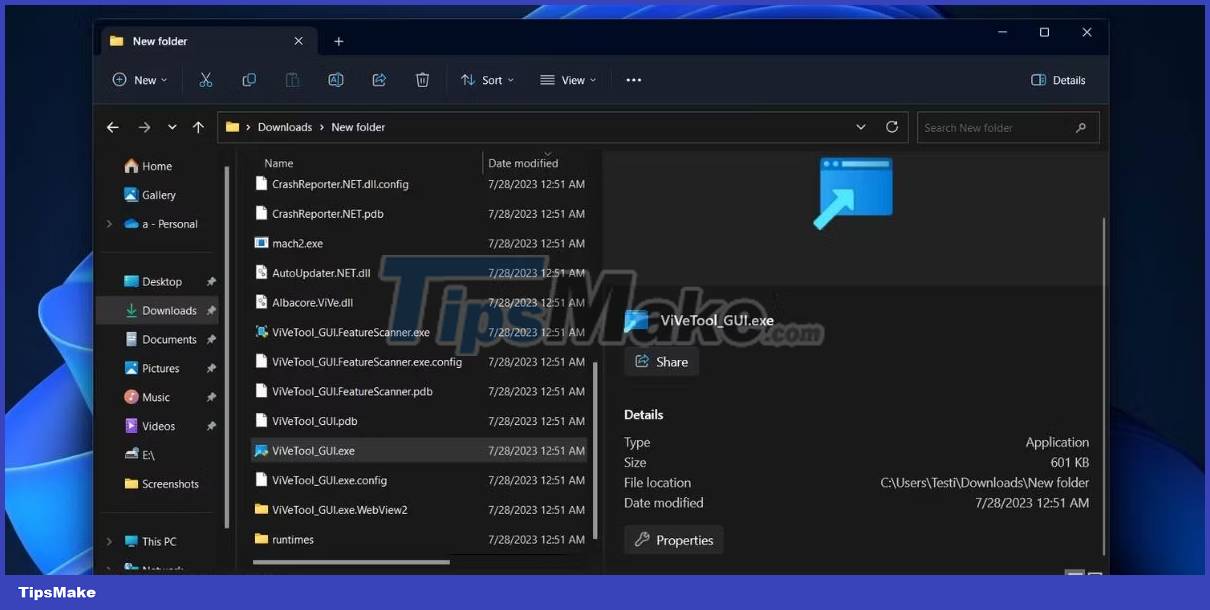
You can easily spot recent activity; Check the details of the file without opening the Properties window. It also includes sharing files using built-in methods or opening the Properties window without opening the context menu when right-clicking.
3. File Explorer tabs
Tabs are useful in any application that has a lot of files or folder locations. File Explorer in Windows 11 and earlier versions lacks this feature, forcing users to create multiple windows to manage files in different locations. Microsoft has finally fixed this, making the overall app experience much better.
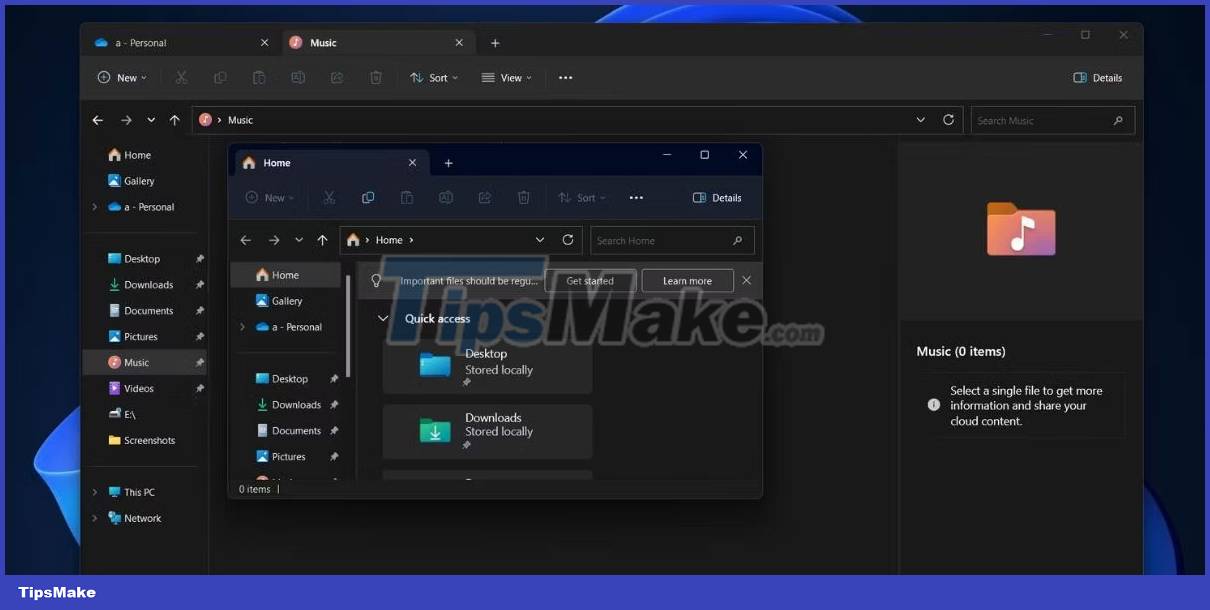
You can easily create multiple applications in one window and move files or folders through them. You can even drag tabs from the File Explorer window to create another window and drag it back to the File Explorer window the same way you would in the Chrome browser. This feature reduces reliance on third-party applications that provide the same functionality as USP.
4. Gallery section
Like the Home section, another small add-on may soon appear in File Explorer based on the Windows App SDK in the Gallery section. At the time of writing, Microsoft is testing the Gallery section in File Explorer to categorize images on your PC. It pulls images from the Pictures and OneDrive folders and sorts them by date in descending order.
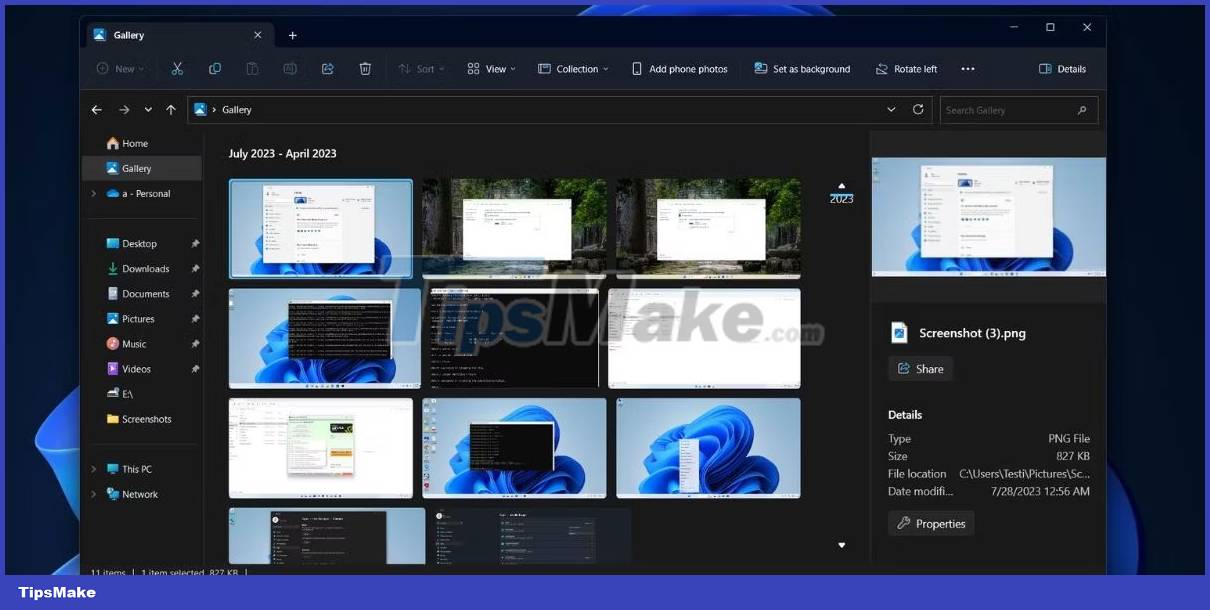
A nice scroll bar shows the start and end dates of the images, and you can use it to scroll through hundreds of photos quickly. In addition to the two default folders, you can add more folders to the gallery to display images stored in other locations.
5. Improved context menu
The right-click context menu was a significant surprise in Windows 11 but is slowly improving. You can find related options like Install whenever you right-click on the application installer file. The menu is now also brief, and you can see the full version by clicking the Show More option. Similarly, a few small tweaks to the right-click context menu would make it better.
6. Microsoft 365 product integration
OneDrive and other Microsoft 365 products will soon become inseparable from File Explorer and experimental builds. The Recommended section will quickly display content from products like Office in thumbnail form.
There's a dedicated OneDrive option in File Explorer's menu bar. You can click on it to see the total space used and get quick access to the app's settings, start syncing files, or upgrade a plan. Files in File Explorer's OneDrive page shows a Status section where you can determine which files are available on Disk and which files are accessible in online mode.
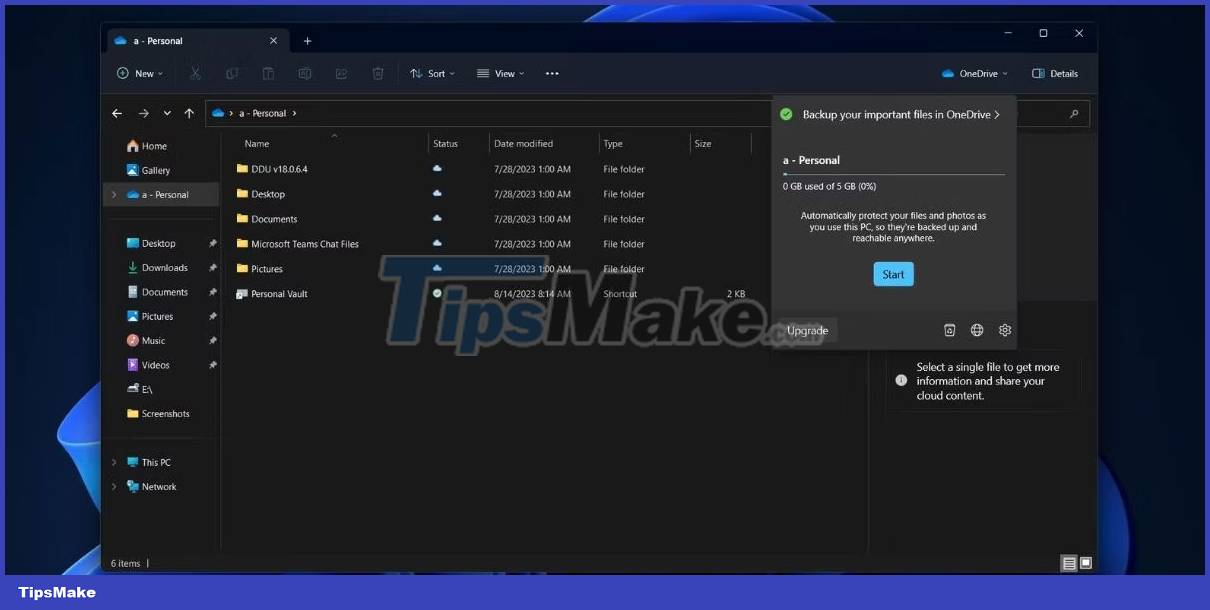
Microsoft is also testing a new Home page in the Settings app, which will also provide an overview of how much OneDrive storage is currently being used.
7. Built-in file storage support
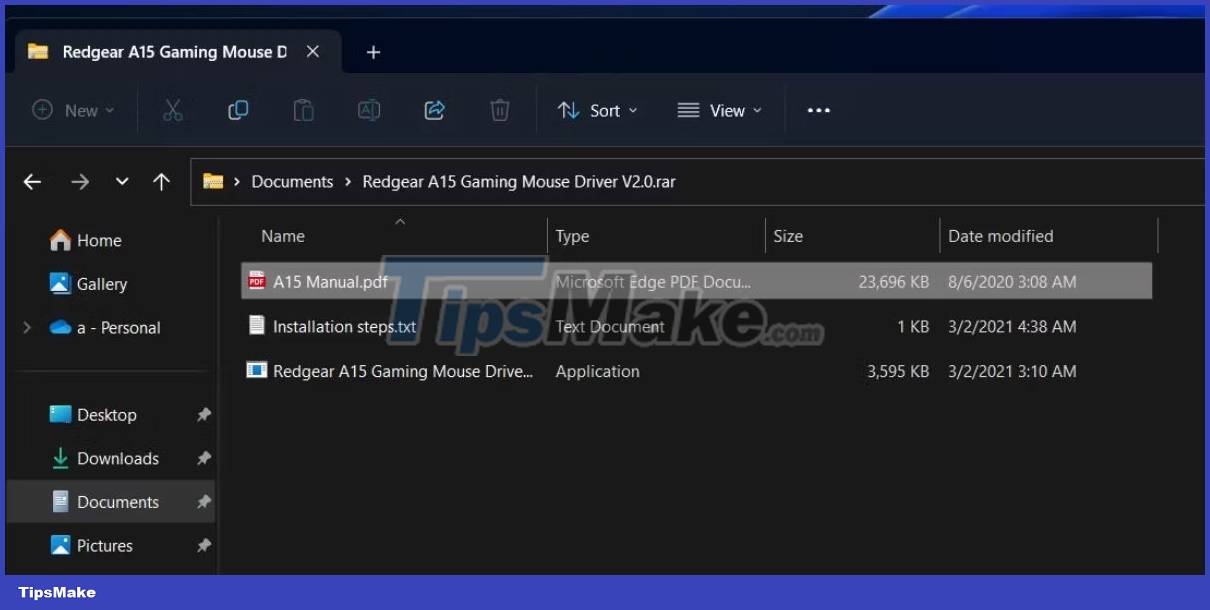
File Explorer has long supported ZIP archives, but lacks the same feature for other popular formats like RAR and 7Z. But after upgrading new feature to Insider build in Dev Channel, File Explorer app can view and extract archive formats. So you won't have to download WinRar whenever you want to extract the RAR file.
You should read it
- Fix File Explorer error not working on Windows 10
- 5 best Windows File Explorer extensions to manage files on the system
- 9 ways to enable File Explorer in Windows 10
- How to fix Working On It on File Explorer Windows 10
- Steps to fix slow Windows File Explorer
- A series of leaked photos shows that File Explorer is about to receive a complete design overhaul on Windows 11
- Restore lost File Explorer icons on Windows 10 Start Menu
- Summary of ways to open File Explorer on Windows 11
- Fix File Explorer not responding error in Windows 11/10
- Here's how to make the File Explorer Windows 10 interface look like File Explorer Windows 7
- How to hide / show the status bar in File Explorer on Windows 10
- How to delete folder and file search history in Windows Explorer?
May be interested

Windows 11 native RAR support 'benchmark' results compared to WinRAR and other compression applications

Microsoft embraces a host of notable AI features for Windows 11: Generative AI for Paint, OCR and more

Microsoft releases new free Windows 11 virtual machine

How to receive SMS on Windows 11

How to enable/disable Live Captions on Windows 11

Upcoming Windows 11 feature lets you switch to a cloud PC in a jiffy






 Fix File Explorer error not working on Windows 10
Fix File Explorer error not working on Windows 10 5 best Windows File Explorer extensions to manage files on the system
5 best Windows File Explorer extensions to manage files on the system 9 ways to enable File Explorer in Windows 10
9 ways to enable File Explorer in Windows 10 How to fix Working On It on File Explorer Windows 10
How to fix Working On It on File Explorer Windows 10 Steps to fix slow Windows File Explorer
Steps to fix slow Windows File Explorer A series of leaked photos shows that File Explorer is about to receive a complete design overhaul on Windows 11
A series of leaked photos shows that File Explorer is about to receive a complete design overhaul on Windows 11